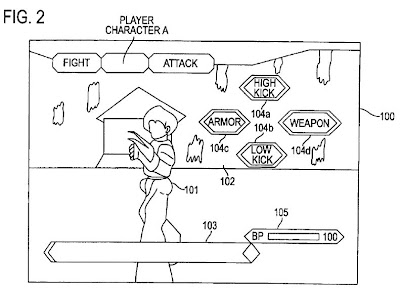U.S. Patent No. 6,913,537: Recording medium and entertainment system
Issued July 5, 2005, to Sony
Summary:
The ‘537 patent allows a player to advance a game by controlling his character through a key input according to the player’s intentions. Whenever the player selects at least one command, the character acts within its designed permissible range. The permissible range of actions expands as the character increases. The patent also provides for the implication of two or more commands combined into a special command, when the combination of the tow commands meets a predefined requirement.
Abstract:
An entertainment system includes an application program recording system which record an application program which can input at least one command of operation an which the player sets the action of the character on a display screen. The command is stored in an action set frame in the unit of one operation to action set frame used to create the movements of the player character. The system further has an input, operation system where the player inputs instructions and a control system which controls the operation of the player character on the display screen based on the command from the application program recorded by the application program record system and the input operation system.
Illustrative Claim:
1. A recording medium containing a program that allows a player to advance a game by manipulating a selected character displayed on a display screen through a key input according to the player's intention, wherein said program recorded in the recording medium enables input of at least one command related to an action of said selected character so as to set up the actions of said selected character as a single operation, and wherein said recorded program enables inputs of a plurality of said commands if action points are within the permissible range of action points after said action points corresponding to said action command types are determined.









